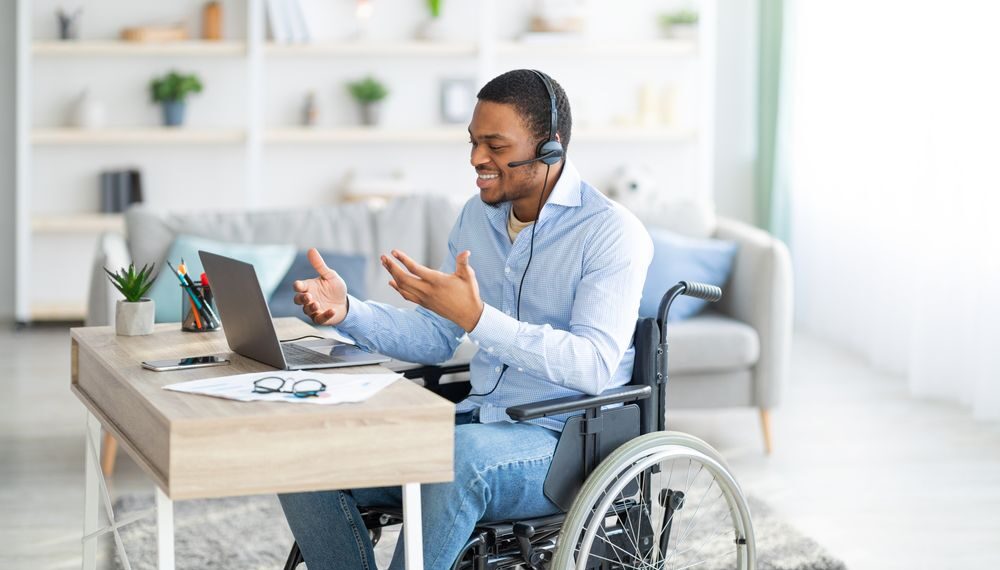One of the primary functions of technology is to empower people to do more, often in easier and more simplified methods. This purpose likewise extends to people with disabilities as they enjoy several empowering solutions through adaptive technologies that are assistive and rehabilitative.
Looking for low vision aids? There are several technologies available in the market. Want to travel great distances? Adaptive automobiles have you covered. As a plus, many of the assistive and adaptive devices are affordable, efficient, and customizable to meet each disability need. They empower people with disabilities in the following ways:


Table of Contents
1. Ability To Move and Travel
Wheelchairs and scooters are assistive technologies that enable people with disabilities to perform tasks more efficiently. Some wheelchairs can be used for long journeys, while others are created for short distances. Nevertheless, they perform the same function, and that’s to help people with disabilities move more freely.
Scooters, on the other hand, are electronic transport vehicles made for a single user. Scooters are operated with batteries and have three to five wheels, controlled by a handlebar. These features make it easier for people with disabilities to navigate their vehicles. Or you can also use ndis transport services.
Furthermore, some of these motor vehicles have adjustable features and can be used for many years by disabled children since they can be modified as they age. There are also assistive cars with seats designed to make traveling easy for the disabled. Not forgetting wheelchairs that can climb stairs and robotic exo-muscle suits—all designed to improve mobility.
2. Aids Their Vision
Screen and video magnifiers assist people with low vision. The software enlarges videos and information displayed on a screen. It can be used alone or in combination with a screen reader. The screen reader dictates information displayed on the screen aloud to aid people with hearing disabilities.
Screen magnifiers also enlarge icons, texts, and graphics 20 times more than the actual size. As you work on a screen, reading or responding to emails, the magnifier will enlarge your area of focus or the cursor, making it easier to see and track work. Additionally, you can modify color combinations, increase contrast, and sharpen edges for easy reading.
Several brands, such as eSight, compete to provide people with disabilities with high-quality visual products. And this means there’d be more options to choose from in the market, greater flexibility, and improved technological empowerment for people with disabilities.
3. Work Opportunities
Due to the pandemic, working from home is now widely implemented in various firms and companies. People with disabilities, especially those with limited movement, can take advantage of this flexible work option to fully engage in their work and make a living for themselves. They’re finding it incredibly useful due to its convenience and accessibility, which aren’t achievable in traditional work settings.
Aside from accessibility, remote work allows them to customize and personalize their workplace. For example, people with disabilities can now work with assistive computer gadgets and smart home assistants to meet schedules and assist with their personal needs. Since they’re teleworkers, they can modify their work settings to eliminate stress and improve productivity.
4. Assist In Hearing
Various technological devices have been developed to transmit sounds to the ears of people with hearing disabilities. Hearing aids are perfect examples of these devices. They’re electro-acoustic tools built to enhance the hearing of the user. Hearing aids amplify sounds and make them more intelligible for disabled people.
Unlike in the past, hearing aids can now decipher music and cover a range of sounds between 100 decibels and more. This means people who have hearing loss can enjoy the sounds of nature, music, and the voices of their loved ones.
Before you get one, however, it’s best to visit a healthcare practitioner and get a professional recommendation. Your level of hearing loss will determine the aid device that suits you.
5. Help In Daily Activities
In this modern age, several apps can be utilized to assist speech and help predict or suggest proper sentences. These apps can be used for day-to-day activities such as ordering groceries, making a call, or alerting people during emergencies.
Spell-check apps are a crucial education tool for people with dyslexia. The software assists them with word and speech construction. It also translates text to speech easily and ensures proper word usage and context for people with disabilities. Through these apps, they’re given a chance to be educationally competent and competitive. Additionally, with spell-check, they can be more confident when speaking with others.
Conclusion
Technology is shifting how everyone interacts with the world, and people with disabilities are not left behind. With different tech solutions, they’re empowered to do and interact more. They can move freely, speak constructively, and work without discrimination.

